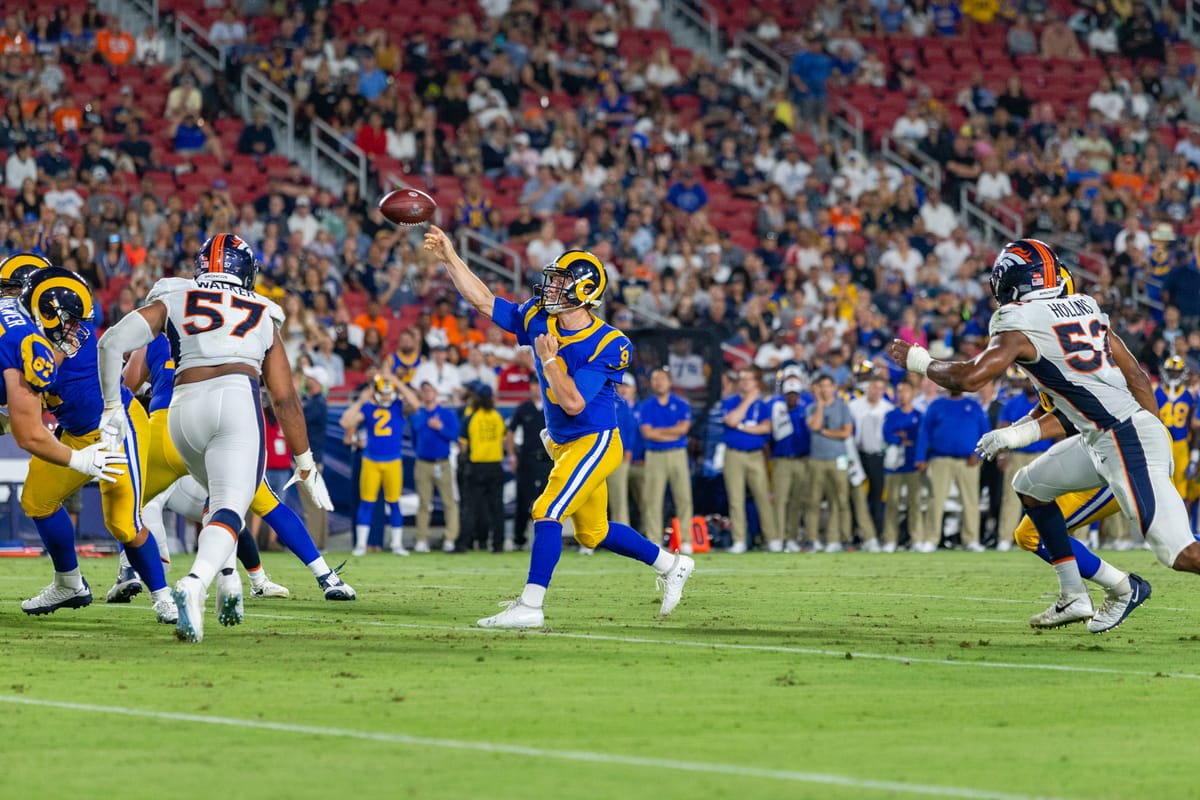"Going to Get It" as the Bullet's Start Flying: Overstriding and Losing Rotation—How Both Hurt Your Throw

When the pressure’s on—whether in practice or a game—it’s natural to want to "go get" your target. This instinct to get on your toes, lean forward, and reach for the receiver is a common biomechanical mistake made by quarterbacks at all levels, from high school to the NFL—myself included. But here’s the thing: that urge to "go get it" can lead to two major issues—overstriding or losing coil and T-spine rotation—and both can hold you back.
If you want QB-specific throwing, lifting, and sprint training customized for you with NFL-level systems, take the assessment and get the app at kinetex.co. For insights on quarterbacking and throwing biomechanics, subscribe to the blog.
Let’s break down what happens:
Overstriding
Overstriding often happens because of that instinct to "go get it." Your body is trying to close the gap between you and your target, which results in extending your stride too far. While it feels like you're doing the right thing, overstriding shifts your center of mass forward and prevents you from rotating with your lower half to generate power. To prove this, stand up, take a large stride, and then try to rotate your hips fully. Then, with a narrow base, take a 6-inch stride and rotate your hips. Note the difference. When you overstride, it becomes harder to stay coiled, reducing the power you can generate from your lower body. You end up relying too much on your arm, decreasing velocity and accuracy, and potentially increasing the risk of injury.
Losing Coil and T-Spine Rotation
When your center of mass moves too far forward and toward your arm side, you lose the ability to properly rotate through your T-spine. This loss of coil is crucial because it diminishes the rotational power that quarterbacks need for a strong, accurate throw. Instead of a full, fluid rotation, you end up pulling down with your lead side in an attempt to generate velocity. This compensation isn’t efficient—it disrupts your throwing mechanics and leads to inconsistency in your delivery.
So What’s the Connection?
Both overstriding and losing coil are byproducts of the instinct to shift forward when you start playing 11-on-11. Overstriding happens because you're trying to "go get it" physically, while losing T-spine rotation occurs because your center of mass shifts too far forward and toward your arm side. Both take you out of position to effectively rotate, which is the foundation of a powerful, accurate throw.
How to Fix it?
As Tom Gormely—QB trainer for 20+ NFL QBs and consultant for 7 NFL teams— has shown in his work on biomechanics, the key to avoiding both of these issues is keeping your center of mass between your base and loaded into your rear hip while positioning the feel of load into the glute/hinge (midfoot) versus knees (toes). This puts you in a more optimal position to be a rotational thrower, using your whole body—not just your arm—to drive the ball with more velocity and accuracy.
It’s human nature to want to reach for the receiver, but to be an elite quarterback, you have to fight that instinct. Stay back, stay coiled, and let your rotation do the work. Doing the opposite creates quad dominance, early extension, and a linear throwing pattern. It also prevents dynamic arm slotting, reduces velocity, and makes you a less reactive thrower. When you avoid the trap of "going to get your target", you’ll see improvements not just in your accuracy but in your ability to maintain power and avoid injury.
If you want QB-specific throwing, lifting, and sprint training customized for you with NFL-level systems, take the assessment and get the app at kinetex.co. For insights on quarterbacking and throwing biomechanics, subscribe to the blog.
